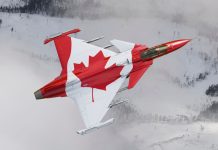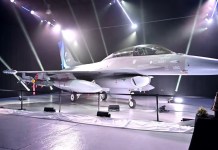The Boeing KC-46A aerial refueling aircraft is the latest variant of the KC-767 aircraft. The US aerospace giant recently completed the first overseas delivery of this aircraft, according to reports.
KC-46A Aircraft
The KC-46A is a wide-body multi-mission aircraft. It is capable of transporting cargo, fuel, passengers, and patients. The aircraft underwent a number of modifications in its airframe design including the addition of a cargo door and an advanced flight desk display.
The airframe has an additional air refueling operator and threat detection and avoidance systems. The aircraft can refuel all US, allied, and coalition military aircraft compatible with international aerial refueling procedures.
This aircraft was manufactured by Boeing under a contract with the US Air Force (USAF) for procuring 179 KC-46A tankers to replace the service’s aging fleet of KC-135 fleet which had been in service since 1965.
The aircraft can carry up to 18 cargo pallets. It can transport up to 58 passengers in a normal situation and up to 114 passengers during a contingency operation. The tanker can also provide urgent aeromedical evacuation by transporting 54 patients.

The KC-46A weighs around 94,198 kg and has a maximum takeoff weight of 188,241 kg. It is 50.5 m long, has a wingspan of 47.5 m, and has a height of 16.1 m. The aircraft can carry a maximum cargo capacity of 29,484 kg.
Boeing was awarded the contract for manufacturing the KC-46A tanker in February 2011. Major suppliers involved in this project were announced by the company in June 2011 and the Integrated Baseline Review (IBR) for the program was concluded in August.
The US Air Force signed a $2.8 billion contract with Boeing in August 2016, for the procurement of the first two low-rate initial production lots of 7 and 12 aircraft. The Air Force then signed a contract worth $2.1 billion for the third production lot of 15 KC-46A aircraft in January 2017.
The aircraft took its maiden flight in December 2017 and its receiver certification testing began in April 2018. Phase II receiver certification flight testing was completed in December 2018 and the Phase III testing was scheduled for 2019. The flight tests required for the first KC-46 tanker were completed by the US Air Force in July 2018.

In September 2018, Boeing bagged another contract worth $2.9 billion from the USAF for the delivery of additional 18 KC-46A tankers. This increased the total number of KC-46A operated by the USAF to 52.
Japan Receives Delivery Of KC-46As
Boeing supplied the first of four KC-46A tankers to the Japanese Air Self Defense Force (JASDF), its first overseas delivery of the plane.
The aircraft had the serial number 14-3611 and used the callsign REACH 46. It began its trans-Pacific flight as it departed from Boeing’s facility in Seattle on October 28, and arrived at Miho Air Base in Japan on the morning of October 29, according to the data obtained from flight-tracking website ADS-B Exchange.
“Japan’s acquisition of KC-46A tankers marks a significant milestone for both the program and US-Japan cooperation in the Indo-Pacific region and plays a critical role in the security alliance between both countries”, said Will Shaffer, president of Boeing Japan. He added that the KC-46A will also help in Japan’s humanitarian and disaster relief efforts owing to its capability of carrying cargo and passengers.

Japan got the approval to procure four KC-46As from the US Department of Defense in September 2016. Boeing was awarded a Foreign Military Sale contract for the first tanker by the USAF and the JASDF in December 2017 and it exercised an option for the second tanker in December 2018.
The contract worth $342 million for the third and fourth JASDF KC-46A Tankers was signed in October 2020.
Japan is going to form a new squadron of KC-46A tankers at the Miho Air Base for operating alongside its existing tanker fleet comprising four KC-767s and two KC-130Hs, which are currently assigned to 404 Hikotai at Komaki.
These newly delivered tankers are going to help refuel the JASDF’s fleet of Lockheed Martin F-35s, Mitsubishi F-15 and F-2 fighters as well as Bell-Boeing MV-22 Osprey tilt rotors.
- Written by Kashish Tandon/EurAsian Times Desk
- Contact the author at: kashishtandon21@gmail.com
- Follow EurAsian Times on Google News




